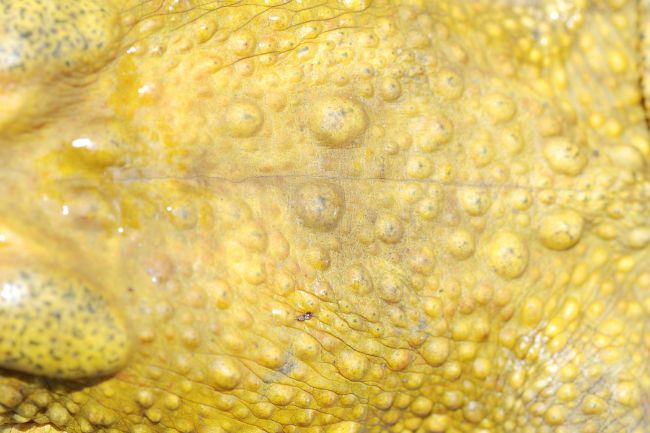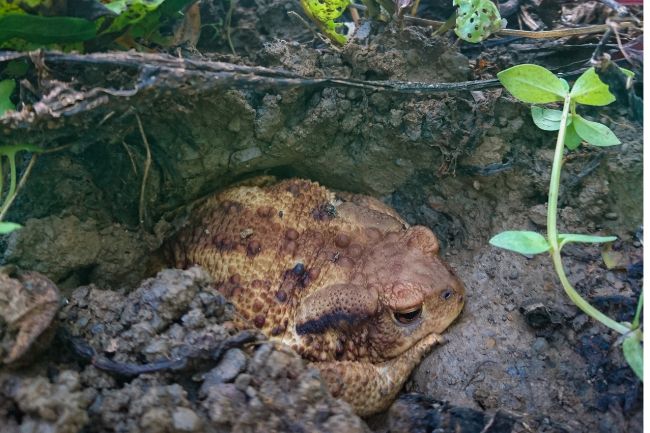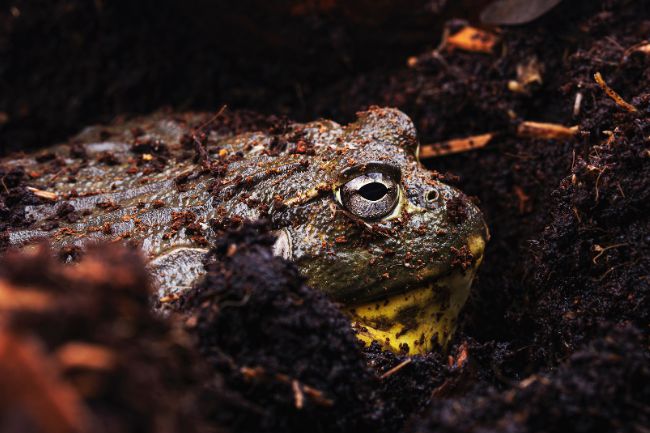Frogs are the largest group of amphibians, with over 7,000 species found across the world. They come in all kinds of shapes and sizes, and specialize in different diets. However, when it comes to the question how long can frogs live without food or water, the answer may surprise you.
One of the reasons it’s important to know how long a frog can go without food and water, is because it can help in the rearing of captive frogs and pets.
Frog Physiology
Frogs are surprisingly adaptable, and are found across a wide range of different habitats, including rainforests, temperate grasslands, and even deserts. What has allowed them to thrive in such a wide range of conditions has been their physiology and their ability to change their living habits to suit their environments.

One key aspect of a frog’s physiology is their thin skin. This allows them to both take in water and oxygen through their skin. When it comes to drinking, frogs don’t take in water through their mouths at all. Instead they can sit in puddles and absorb water this way.
This occurs due to their skin being thin enough for water to directly allow water to move through it into their veins. This amazing ability has some disadvantages too, with frogs easily becoming dehydrated. It’s for this reason that they often spend their time in damp places, such as around water.
Glands across their skin also help prevent water loss by releasing a mucus that helps coat the skin. Similar glands can also release toxins that make them poisonous to eat.
As well as this ability to take in water, they are also able to breathe by air moving through their thin skin into their bodies. This ability means they are able to breathe underwater, as well as above it.
While they do also breathe through their lungs, and through the lining of their mouths, they struggle to acquire enough oxygen through these methods alone, meaning using their skin to breathe can be useful.
When it comes to surviving without water, the ability of frogs to take in moisture through their skin is invaluable. While there may not be huge amounts of water around, they are able to take in water from morning dew or rain, as it coats the vegetation around them.

Many frogs also enter a kind of hibernation during dry periods, known as aestivation. In these periods they will dig down into the ground and bury themselves where it is cool and damp. Here they will be able to acquire some moisture from the damp ground around them.
Frog Metabolism
The main way that frogs can survive periods when the conditions become unsuitable for them is to enter hibernation or aestivation. Hibernation occurs during cold conditions, such as during winter, aestivation is for when they experience hot or dry periods.
Both require the frog to lower their metabolic rate. This means that their heart rate and breathing will slow, and they enter a sleep-like state. Amazingly frogs can hibernate both underground, in trees, or even underwater, depending on the species.
A lower metabolic rate will mean they need less food and water to sustain them. Many frogs enter these states on an annual basis, as conditions become too difficult for them to survive. In this torpid state they require very little food or water, and can go without it for many months. Some frogs have even been found that have gone without food or water for more than a year.
Although we may think of hibernation as a long sleep, frogs will often move around in this state, and those hibernating underwater even need to swim about to keep enough oxygen moving around their skin.
The African bullfrog has a particularly clever adaptation to dry periods. Having buried itself underground it then sheds several layers of its own skin, which harden around it. It then lives within this cocoon of skin, safe from drying out, and able to breathe through nostril holes. A rather freaky, but clever adaptation.

Also read: Frog Food: Discovering What Wild and Pet Frogs Eat
Frog Survival
When it comes to prolonged periods without food and water, whether a frog can survive will depend on several factors.
Firstly, it’s important the frog is healthy. Frogs fighting off illness or injury require more food and water to recover, meaning they are unlikely to survive long periods without.
Age is also important. The younger a frog is, the less time it can survive without food and water. Tadpoles for instance can only survive a day, whereas an adult frog might survive three to four weeks without anything to eat.
Its environment is also key. Frogs will generally move to a more suitable location if they go without anything to eat or drink, for example, finding cool and more sheltered locations to avoid losing additional moisture.
Species and size is also important, while a larger animal will need more food to sustain it, it might also have more reserves, meaning it can last longer without anything.
Time of year is also important, as if conditions are hot, surviving without water will be more challenging, and if they are cold, then being without food can be more difficult. Frogs are also more likely to have good reserves at times of year when there is plenty of food around.
All these criteria will help decide whether a frog can survive without food and water and for how long. Most estimates give between three to four weeks for an adult frog to survive without food, but this can be much longer if the frog is hibernating. Water is more essential, and most species will only survive a few week without water, if they aren’t in damp conditions.

Ideally, like all animals, frogs would prefer to have food and water available for whenever they need it. This will make their lives easier and less stressful, and is something to be considered if keeping captive frogs.
Also read: Lifespan of Wild and Pet Frogs
Frog Conservation
Understanding more about how long frogs can go without food is important for conservation and captive breeding efforts. It can help conservationists plan how often to feed captive frogs, and to understand when there is not enough food and water available within a frog’s habitat, which can then result in populations decreasing over time.
Also read: Creating a Frog-Friendly Habitat: Tips and Guidelines
Conclusion
When it comes to how long frogs can live without food or water, the answer is somewhere between a day and several months, depending on the conditions, the species and whether they are hibernating or not.
The good news is an adult frog can survive several weeks without food and water, due to their adaptations. However, in many places in the world we are seeing frog numbers drop dramatically, in part because there simply isn’t enough food and clean water for them to survive.
In order to provide enough for frogs to eat we need to ensure there are plenty of natural habitats provided, with clean water, and prey for them to eat.

